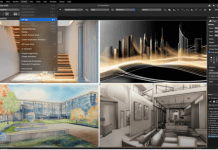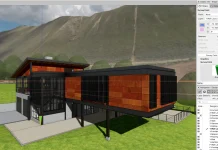
WSP reveals how it removed the barriers to use BIM more often and with wider audiences by publishing it’s Building Information Models (BIMs) online
WSP used Tridify to publish its Building Information Models (BIMs) online.
WSP provides engineering, architect and design services to clients in various industries, including transportation, infrastructure, buildings, environment and energy. From the tallest towers to the deepest stations, WSP’s experts plan, design and deliver complex projects drawing on over 130 years of technical excellence.
Barriers to sharing BIMs
WSP Finland wanted to find new ways to share BIM models in the early design phase of architecture, transportation or infrastructure schemes. Often with clients or colleagues who didn’t have any BIM knowledge and who could be anywhere in the world.
Working in disparate teams and trying to collaborate using BIMs is often a problem for anyone involved with BIM. Mostly due to traditional methods requiring all stakeholders to download a specialist application and become familiar with how to use it, before they can receive and view a BIM file.
Roope Syvälahti, construction consultant and project manager at WSP Finland, commented: “To show clients or colleagues a BIM model, previously we might have a Skype or physical meeting but often this is simply not practical and not very effective. And unless all those involved are BIM experts, the software needed is too complex to use.”
New ways of working
WSP Finland decided to use Tridify’s BIM Publishing cloud service. By simply uploading BIMs into Tridify as IFC files, BIM models are now published to the web in just a few clicks. WSP chooses which 3D models to publish, either one type of model on its own, or a combination of models such as structural, HVAC and electrical, all combined in the same view.
“As soon as we saw the Tridify service we knew it was what we’d been waiting for.
“Being able to rapidly publish BIM models to the web opens up new ways of working. This ease of use is impressive, with no barriers to adoption. Clients or colleagues can easily view models when they want, on any device and it also solves the problem of involving stakeholders who are not accustomed to specialist design software,” commented Syvälahti.
Syvälahti added: “Clicking on a URL or QR code allows them to interact with 3D models and intuitively wander around. Another bonus is the very low cost of the Tridify service so there’s no risk of investing heavily in an expensive new solution. It only costs us $90 per month which provides enough capacity for several projects.”
Better collaboration
One of the main success factors of the Tridify service has been how it improves the way teams work in the early design phases.
Now anyone involved in a project can engage with a 3D model, as Karoliina Lehtonen, BIM coordinator at WSP Finland, highlighted: “Now all parties can easily visualise a space, see how it looks and understand how everything is going to function.
“3D models are obviously far superior to 2D plans when communicating in the early phases of any project, helping people to understand what something is going to look like.
“Now we share more models but without having to use specialist design software, so users can be from Finance, Marketing or Contracts.”
No need to be scared of BIM
WSP has also found that users who are not familiar with Building Information Models aren’t scared of using them anymore, as they simply open the URL and drag, zoom and pinch the visualisations on their phone – an interface that everyone is comfortable with.
“Clients now have the opportunity to understand a design better as using Tridify, 3D models are more readily available and meetings are more efficient.
“Overall, everyone has the opportunity to be more engaged and involved, from project managers to building users, as they have the same 3D information as the designers. Client teams can also see the changes in a design faster and they can see the real impact of changes in the model,” Lehtonen continued.
To date, WSP has used the Tridify service on commercial buildings and transportation projects, including underground stations but will soon be adding healthcare to this growing list. A clear benefit here will be allowing medical staff such as doctors and nurses to see how a new hospital will function. “It’s invaluable to be able to give 3D models to anyone who is involved in the use of a building so they can give vital, initial feedback,” added Syvälahti.
Client benefits
WSP is always exploring how digitalisation can improve its productivity by updating existing processes. By removing the barriers to using BIM models more often and with a wider audience, workflows are becoming more efficient.
Lehtonen concluded: “Tridify allows us to share the benefits of 3D models with more people, earlier, which improves collaboration and accelerates the understanding of what a project looks like and how it will function.
“Streamlining this part of the process saves time, reduces the chance of any miscommunication and delivers valuable benefits to clients.”













